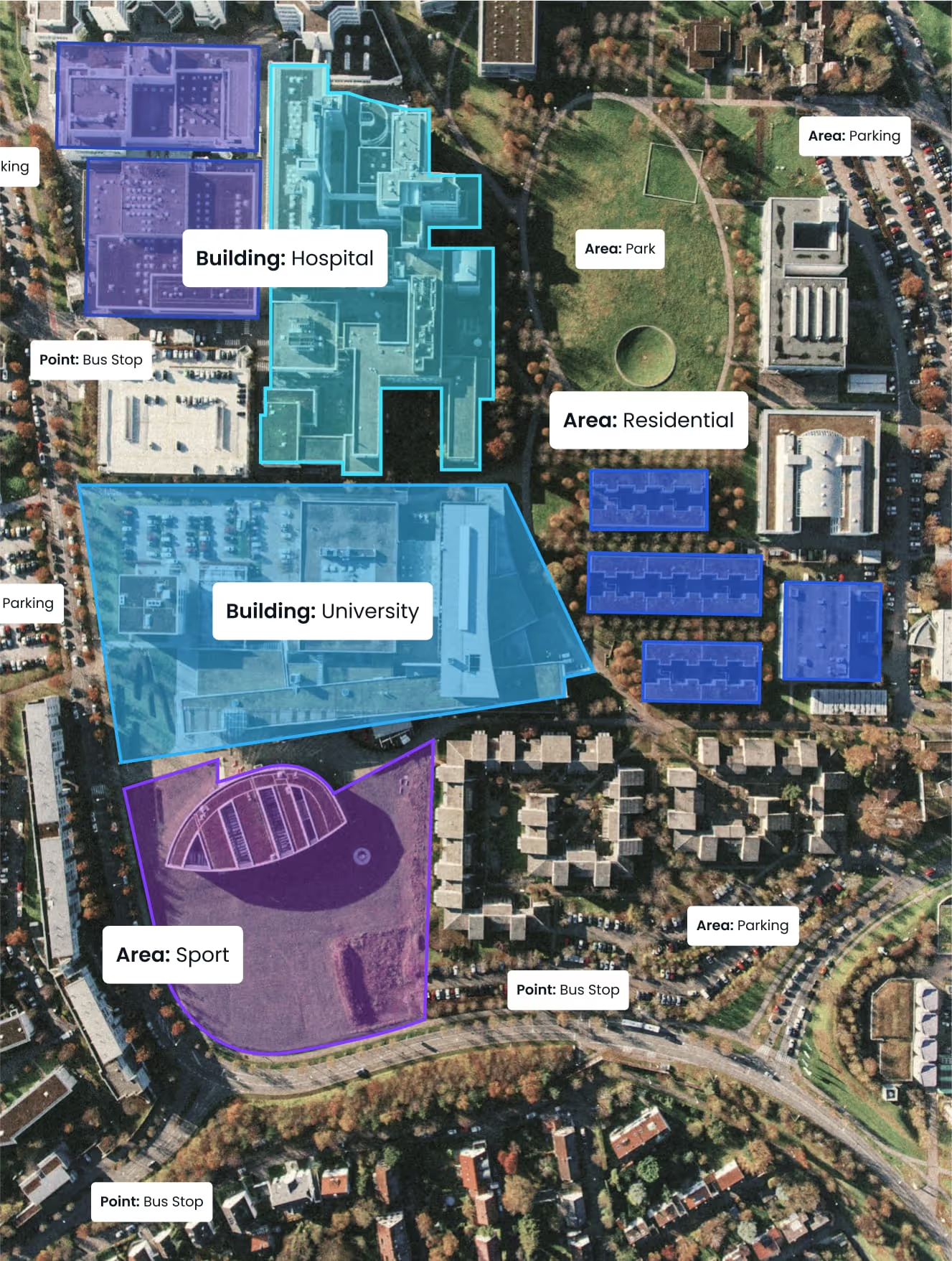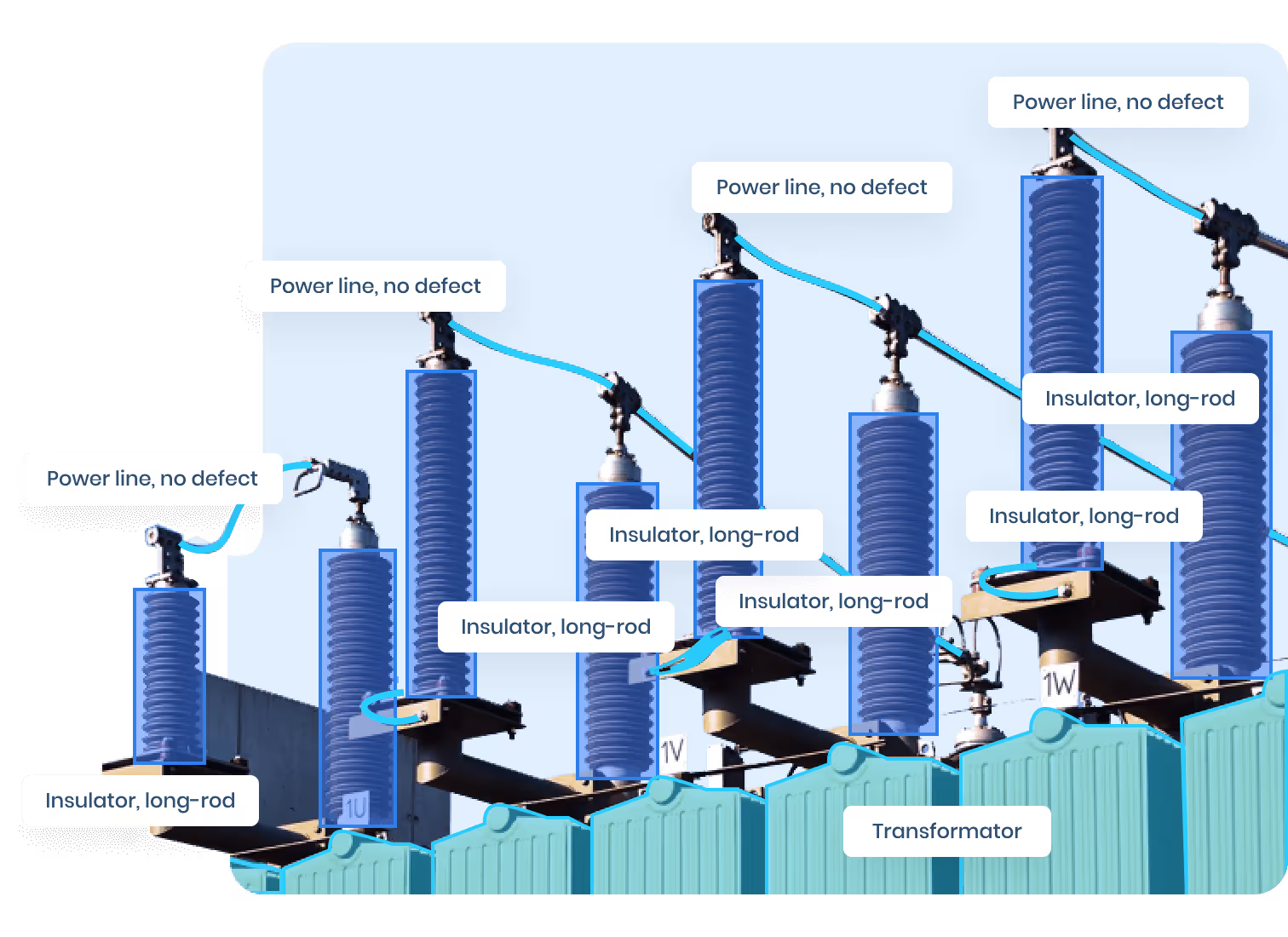Introduction: AI in Pathology Is Redefining Diagnostic Precision
Artificial intelligence is transforming digital pathology from a static image-viewing process into a dynamic, data-rich diagnostic discipline. By training algorithms on annotated histopathological data, AI models can now assist pathologists in diagnosing cancer, classifying tissue patterns, and even predicting patient outcomes.
At the heart of this transformation lies pathology image segmentation—the detailed annotation of cellular and tissue structures within digital slides. These high-resolution images, known as Whole Slide Images (WSIs), are often gigapixel in size and contain critical diagnostic information at microscopic scale.
This article offers a comprehensive guide to segmenting pathology images for AI, including workflows, annotation types, tools, and best practices tailored for clinicians, medical researchers, and Healthcare
1. What Is Pathology Image Segmentation?
🔬 Definition
Pathology image segmentation refers to the process of delineating tissue regions, cell types, and structures within digitized microscope slides using techniques like semantic segmentation, instance segmentation, and polygon annotation.
🧠 Why It Matters for AI
- Enables deep learning models to “see” and understand histological patterns.
- Reduces diagnostic error through quantitative tissue analysis.
- Powers automated grading systems (e.g., Gleason scoring for prostate cancer).
- Supports biomarker discovery and tumor microenvironment analysis.
📊 Key Applications
- Cancer diagnosis and grading (breast, colon, prostate, lung)
- Cell detection and counting
- Nucleus segmentation
- Tumor-stroma interface mapping
- Inflammatory infiltration analysis
📚 Read more on how AI augments pathology from Nature Medicine.
2. Understanding Whole Slide Imaging (WSI)
🧪 What Are WSIs?
Whole Slide Imaging (WSI) is the digitization of traditional glass pathology slides at ultra-high resolution, creating virtual slides that can be viewed and navigated like maps. These slides allow pathologists and AI models to zoom in and out across tissue sections with surgical precision.
WSIs are the backbone of digital pathology. They allow clinicians to examine tissue morphology digitally, and they give AI models access to cellular structures in much greater volume than traditional microscopy ever could.
Key Characteristics of WSIs
- Gigapixel Resolution
Each slide can exceed 100,000 x 100,000 pixels. This makes it possible to inspect the image at both tissue and cell levels without losing clarity. - Multi-level Magnification
WSI viewers allow seamless zoom from 1x to 40x or higher—replicating how a pathologist would examine slides under a microscope. - Tile-Based Architecture
WSIs are stored as tiles or patches. This allows systems to load only what’s visible on screen rather than the entire image—critical for performance. - Stain Diversity
WSIs come with various stain types like H&E (hematoxylin and eosin), IHC (immunohistochemistry), PAS, Giemsa, and others. Each stain highlights different structures and affects segmentation behavior. - Multiple File Formats
Common formats include.svs,.ndpi,.mrxs,.tiff, and.scn. These are often vendor-specific and may require custom handling.
Why WSIs Matter for AI and Annotation
Whole Slide Images are essential for training pathology AI models. Their massive resolution captures both the macro- and micro-scale context needed for meaningful analysis.
Here’s why they’re indispensable:
- Dense Information: A single slide may contain thousands of cells and dozens of tissue types. Annotating even a small region can train highly capable AI models.
- Remote Collaboration: Digital slides can be shared with pathologists anywhere in the world—making it possible to run multi-site annotation projects.
- Patch Extraction: Developers can divide WSIs into tiles to create massive training datasets from just a few slides.
- Precision Training: Because WSI viewers mimic microscopes, annotations can be made at diagnostic resolution, improving model accuracy.
Challenges of Using WSIs for Annotation
Despite their advantages, WSIs introduce several technical and operational hurdles:
- File Size and Performance
WSIs are often 1–10 GB per slide. Streaming or loading them requires powerful infrastructure and optimized viewers. - Magnification Consistency
A model trained on 10x magnification tiles might fail when tested on 20x. Annotation workflows need to standardize or accommodate multiple magnification levels. - Color Variation Between Labs
Differences in staining techniques can create inconsistent slide appearances, even for the same tissue. This can confuse models unless color normalization is applied. - Annotation Complexity
Unlike natural images, annotating WSIs requires zooming in and out, navigating large areas, and accurately identifying complex structures like glands, nuclei, or tumor margins.
Popular Tools for WSI Annotation
There are several well-known tools that make WSI navigation and annotation practical:
- OpenSlide: An open-source C library that supports reading WSI formats like
.svsand.ndpi. Often used in backend pipelines. - QuPath: A powerful, open-source desktop tool for cell segmentation, batch processing, and scripting—especially popular in academic labs.
- Digital Slide Archive (DSA): A scalable, web-based platform with integrated annotation, streaming, and project management.
- HistomicsTK: Built on top of DSA, it enables annotation, segmentation, and visualization through web-based tools.
- Aiforia: A commercial platform optimized for AI-assisted WSI segmentation, with zoomable viewers and model-in-loop workflows.
Pro Tips for Working with WSIs in AI
- Always annotate across multiple magnification levels to support multi-scale learning.
- Use tiling strategies to break up large images and manage GPU memory constraints.
- Apply stain normalization techniques to minimize variability between slides from different labs or scanners.
- Design your annotation pipeline to support multiple label types—from cell instance masks to global tumor regions—depending on your use case.
📂 Looking for public datasets? Check out the Cancer Digital Slide Archive for annotated WSIs.
3. Common Segmentation Techniques in Pathology Annotation
🟪 3.1. Semantic Segmentation
Each pixel is assigned a tissue type (e.g., epithelium, stroma, tumor). Ideal for:
- Cancer subregion mapping
- Tumor vs. non-tumor classification
- Tissue boundary detection
🟦 3.2. Instance Segmentation
Used when differentiating between multiple instances of similar objects, such as:
- Individual cell nuclei
- Clusters of lymphocytes
- Overlapping mitotic figures
🔺 3.3. Polygon Annotation
Manual or semi-automated contours for:
- Irregular tumor boundaries
- Complex glandular structures
- Stromal regions with artifacts
🟨 3.4. Point & Keypoint Annotation
Useful for:
- Counting mitotic figures
- Identifying center of cells
- Mapping immune hotspots
🧩 3.5. Heatmap or Attention Regions
Annotation masks that reflect:
- Tissue activity
- Model saliency
- Expert gaze tracking
🛠️ Read how MONAI supports medical image segmentation pipelines in PyTorch.
4. Workflow: From Slide to AI-Ready Annotation
🧷 Step-by-Step Pathology Annotation Pipeline
1. Slide Selection: Choose high-quality, diagnostically relevant WSIs.
2. Region of Interest (ROI) Definition: Narrow scope to tissue-containing areas.
3. Annotation: Label cell types, regions, or patterns using a selected method.
4. Review & QA: Double-check with a pathologist or clinical expert.
5. Export: Convert to formats compatible with deep learning frameworks (e.g., COCO, PASCAL VOC, YOLO).
💡 Tip:
Use pathologist overlays or pen-marked scans to guide early model training. Over time, evolve toward fully pixel-level ground truth.
5. Annotation Tools for Pathology Image Segmentation
✅ What to Look for
- Native WSI support (
.svs,.ndpi,.tiff) - Zooming and tiling performance
- Multi-user collaboration
- Annotation layers (nuclei, ROI, tumor zones)
- AI-assist / model-in-loop capabilities
📦 Check out QuPath’s GitHub for tools and scripts.
6. Use Cases Across Healthcare and Research
The power of pathology image segmentation lies in its adaptability across a wide spectrum of medical disciplines and applications. Below is a deeper dive into the most prominent use cases that are actively transforming healthcare workflows and AI development.
🧬 6.1. Oncology
Cancer diagnosis and tumor mapping is the most widely adopted use case of AI-powered segmentation. Annotation of tumor regions, lymphocytes, necrosis, and stroma is crucial for:
- Gleason grading in prostate cancer
- Nottingham grading in breast cancer
- Tumor staging and margin identification in colorectal cancer
- Lymph node metastasis detection in breast and gastric cancers
🔎 Example: The CAMELYON16 dataset helped train algorithms to detect breast cancer metastasis in lymph nodes with near-radiologist accuracy.
🔗 CAMELYON16 Dataset
🧠 6.2. Neuropathology
Digital slides of brain biopsies or resections are used to train models for:
- Glioma subtype segmentation
- Meningioma detection
- Alzheimer’s disease pathology, such as identifying amyloid plaques and neurofibrillary tangles
- Multiple sclerosis lesion segmentation
🔎 Clinical Need: These annotations are critical in reducing inter-observer variability in grading CNS tumors.
🩸 6.3. Hematopathology
In hematopathology, segmentation is used for:
- Cell lineage classification (e.g., blasts vs. mature lymphocytes)
- Bone marrow biopsy segmentation (fat cells, megakaryocytes, erythroid clusters)
- Blood smear analysis for diseases like leukemia or anemia
🔎 Tool Insight: QuPath can automate detection and classification of thousands of blood cells per image—enhancing both speed and consistency.
🧵 6.4. Dermatopathology
AI segmentation models in dermatology support:
- Melanoma border detection
- Epidermal thickness measurement
- Inflammatory cell infiltration
- Psoriasis lesion mapping
🔎 Special Case: In Mohs surgery, AI segmentation assists in margin assessment of excised skin tissue, improving intraoperative decisions.
🧫 6.5. Gastrointestinal Pathology
GI pathology use cases benefit from:
- Crypt segmentation in inflammatory bowel disease (IBD) diagnosis
- Goblet cell density measurement
- Barrett’s esophagus lesion mapping
- Helicobacter pylori detection
🔎 Real-World Application: The PANDA Challenge trained algorithms on prostate and GI biopsy segmentation for use in clinical screening.
🧪 6.6. Drug Discovery & Clinical Trials
Segmentation plays a major role in preclinical and translational research:
- Quantifying biomarker expression (PD-L1, HER2, Ki-67)
- Tracking disease progression in animal model slides
- Histopathological scoring of treatment response
- Scalable histology endpoints in digital pathology for CROs
🔎 AI-Driven Trial Efficiency: Pharma companies now use AI-annotated tissue images as endpoints in Phase I/II trials, reducing reliance on subjective scoring.
📖 A recent study in JAMA explores AI performance vs. human pathologists in cancer grading.
7. Annotation Quality Assurance in Pathology AI
🩺 Why QA Is Essential
- Annotation errors can introduce clinical risk.
- High inter-annotator variability in pathology requires consistency checks.
- AI trained on bad data may underperform in real-world deployment.
🛡️ Common QA Techniques
- Double annotation + adjudication
- Inter-annotator agreement scoring (e.g., Cohen's Kappa)
- Gold standard references
- Consensus panels for rare pathologies
📘 Learn more about annotation QA in medical AI on PubMed.
8. Key Challenges in Pathology Image Segmentation
- Gigapixel image sizes
- Require high memory and processing power
- Slow down model training and inference
- 🛠️ Solution: Use tiled loading or patch-based approaches
- Subjectivity in annotations
- Different experts may label tissues differently
- Leads to inconsistent training data and poor generalization
- 🛠️ Solution: Apply consensus labeling and inter-review validation
- Tissue artifacts (e.g., folds, tears, blurs)
- Can be misinterpreted by the model as features
- Reduce model accuracy and reliability
- 🛠️ Solution: Perform preprocessing and artifact filtering
- Class imbalance (e.g., rare cancer types or regions)
- Models may favor common tissue types and underperform on rare ones
- Bias in predictions and reduced sensitivity
- 🛠️ Solution: Use oversampling, focal loss, or class-balanced datasets
- Stain variability across labs (e.g., H&E, IHC)
- Color differences affect feature extraction
- Poor performance on unseen staining styles
- 🛠️ Solution: Apply stain normalization and augmentation
🧠 Curious how stain normalization works? Read this paper on stain transformation methods.
9. Emerging Trends and Innovations
As digital pathology matures, new innovations are pushing the boundaries of annotation, segmentation, and training. Below are the most important technological trends shaping the next generation of AI-powered pathology tools.
🔄 9.1. Model-in-the-Loop Annotation
Instead of full manual labeling, annotators use pre-trained AI models to generate initial segmentations that are then corrected and refined.
Benefits:
- Increases speed by up to 60%
- Reduces fatigue for expert annotators
- Creates a continuous feedback loop between annotation and model training
🔧 Tools like Encord Active or Labelbox Boost provide real-time suggestions that improve over time with more user input.
🧠 9.2. Self-Supervised and Weakly Supervised Learning
Given the high cost of expert annotation in pathology, self-supervised learning (SSL) methods are gaining traction. SSL pre-trains models using unannotated slides to learn structure and texture representations.
Use Cases:
- Pre-training on large public datasets (e.g., The Cancer Genome Atlas)
- Reducing the need for thousands of pixel-level masks
- Bootstrapping models with slide-level labels
🔗 A study from MICCAI 2021 demonstrated how SSL improved colorectal cancer classification with just 10% of the labeled data.
🌐 9.3. Federated Learning in Pathology AI
Hospitals often cannot share patient data due to privacy concerns. Federated learning allows multiple institutions to train a shared model without exchanging raw slides.
Impact:
- Protects PHI and GDPR compliance
- Enables cross-center generalization
- Encourages multi-institutional collaboration
🔗 Federated Tumor Segmentation (FeTS) is a prime example of federated AI applied to brain tumor segmentation.
🧪 9.4. Synthetic Data Generation and Augmentation
With GANs and diffusion models, researchers can generate pathology slides synthetically, helping solve problems like:
- Rare disease representation
- Data imbalance in training sets
- Controlled experiments with perfectly labeled features
Tools to Explore:
- PathologyGAN for generating cell-level images
- STAIN Style Transfer to unify staining across slides
🧬 9.5. Spatial Biology Meets AI Segmentation
Emerging multiplexed tissue imaging techniques (e.g., CODEX, MIBI, CyTOF) generate data beyond H&E staining—capturing spatial distribution of dozens of biomarkers simultaneously.
AI Use:
- Cell segmentation combined with protein expression
- Spatial clustering of immune cells and cancer cells
- AI-guided tumor microenvironment (TME) analysis
🔎 This fusion of spatial omics and segmentation is at the forefront of precision oncology research.
⚡ 9.6. Cloud-Native Pathology Annotation Pipelines
Modern labs are moving away from local software toward cloud-based platforms that support:
- WSI storage and streaming
- Multi-institutional reviewer access
- GPU-backed inference and annotation
🔧 Tools like AWS HealthLake Imaging and Google Cloud’s Medical Imaging Suite are building infrastructures for scalable, cloud-native pathology AI.
📊 Explore the MONAI Pathology Toolkit for open-source AI development.
10. Pathology Annotation Formats & Conversion
🔄 Common Formats
- JSON, COCO, YOLO, PASCAL VOC
- GeoJSON for polygon labels
- Mask arrays (.npy, .png) for segmentation
🔁 Conversion Tools
Conclusion: Data Is the Diagnosis
Precision in pathology image annotation is not just a technical necessity—it’s a clinical responsibility. Each polygon traced, each nucleus outlined, contributes to building AI models that can support pathologists, accelerate drug discovery, and improve diagnostic outcomes.
With the right tools, workflows, and expertise, AI-assisted pathology is not a futuristic concept—it’s already transforming labs around the world. But the success of these systems hinges on one thing: high-quality, consistent, and clinically relevant annotations.
📌 Work with Pathology Annotation Experts
Looking to scale your AI model for pathology?
At DataVLab, we specialize in clinical-grade pathology annotation—whether it’s tumor segmentation, nucleus detection, or complex WSI workflows.
✅ Expertise in oncology, neurology, and rare diseases
✅ HIPAA/GDPR-compliant pipelines
✅ Radiologist- and pathologist-led QA
✅ Custom formats: COCO, YOLO, JSON, or PNG masks
📩 Contact us today to discuss your project and accelerate your healthcare AI roadmap.
📌 Related: Overview of Medical Image Annotation for AI: Modalities, Tools, and Use Cases
📬 Questions or projects in mind? Contact us





